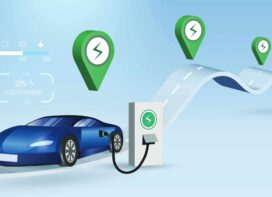 We introduced mechanized parking system to accommodate as many cars as possible. We also looked at car-sharing programmes. In fact, we did a survey on whether people would be interested in adopting car-sharing. We got overwhelming and positive response from the people. Overall the new community has a low-carbon footprint, virtually no crime, a civically engaged population and the cities healthiest residents.
We introduced mechanized parking system to accommodate as many cars as possible. We also looked at car-sharing programmes. In fact, we did a survey on whether people would be interested in adopting car-sharing. We got overwhelming and positive response from the people. Overall the new community has a low-carbon footprint, virtually no crime, a civically engaged population and the cities healthiest residents.
As we look at the future, will driverless cars be able to outperform rickshaws? Can a modern “Green” form of the rickshaw appeal to cities worldwide? It is always difficult to make people share cars in an emerging market because they want car to be extension of themselves. But we need to find alternatives of the car. Cycling is a healthy and sustainable way to get around cities. In Sao Paulo, Brazil, on Sundays, they take traffic off of about 200km of road to prioritize bicycle use and of course, places like the Netherlands encourage people to adopt bicycles which is outstanding. Another good example is Korea where the central median of the highway which contains bicycle path underneath the shade of solar panels. Then there are visions/plans for building bicycle highways above the railway lines. So, when you make/plan for your cities, make them walkable and cycle friendly.
It is interesting that most Smart Cities in India are going for multi-storeyed parking garages. Now the most advanced cities are converting the parking garages to other purposes. The idea being that we will need less space for parking over the next few decades. As driverless cars come on line or shared cars come on line, the notion of parking changes significantly.
The first question we need to ask is what is it about India that needs to be taken care of first for us to begin to rationalize or at least to render the movement on the roads more efficient. Rethinking if the vehicle itself must be one of the very first issues.

From a city’s administration view point, how do you make sure there is end-to-end connectivity, that is the biggest challenged
– Prasun Agrawal
Prasun Agrawal: Gaia Smart Cities is an Internet of Things company in the smart city space. We have been working with city municipal corporations as part of the smart cities challenge by the Ministry of Urban Development, GoI. This initiative is primarily for the brownfield cities, that is existing cities and involves retrofitting, redevelopment, or greenfield development as part of the city. Mobility, smart mobility as a topic is covered by all the 98 cities across the spectrum and the ten additional cities which have been added.
We have been actively involved in the proposal making and in identifying the problems. The issue is how do you work with the global best solutions available in the market and customize them according to the Indian requirement. And all this under the tendering system, so that is also the key thing which must be focused. You also mentioned a very critical point about health and how do you bring in health as a key component of smart living. We also went one step further of how do you bring in happiness into the smart city living. From the administration view point, people are thinking about all sections of the society and not just the rich but people who cannot afford cars. So, they are relying on auto-rickshaws in smaller cities like Raipur and Bilaspur. So, from a city’s administration view point, how do you make sure there is end-to-end connectivity, that is the biggest challenge. In today’s India, we have the best opportunities for global companies to bring in smart solutions, best practices and gap funding for implementation of projects in India.
 TrafficInfraTech Magazine Linking People Places & Progress
TrafficInfraTech Magazine Linking People Places & Progress

